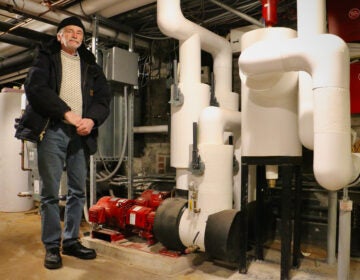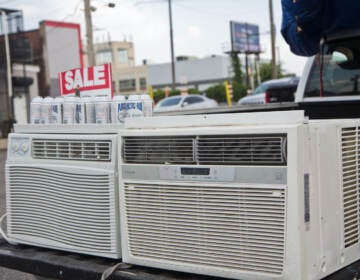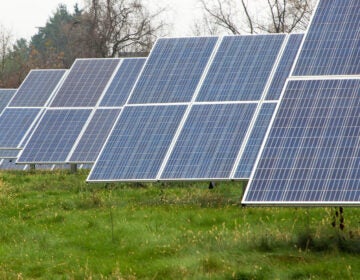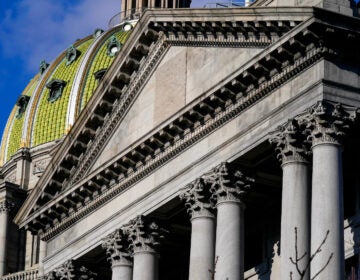Low-income Philadelphians continue to face high energy costs, analysis finds
A national nonprofit found Black and Hispanic households spend more of their income on energy than households overall.
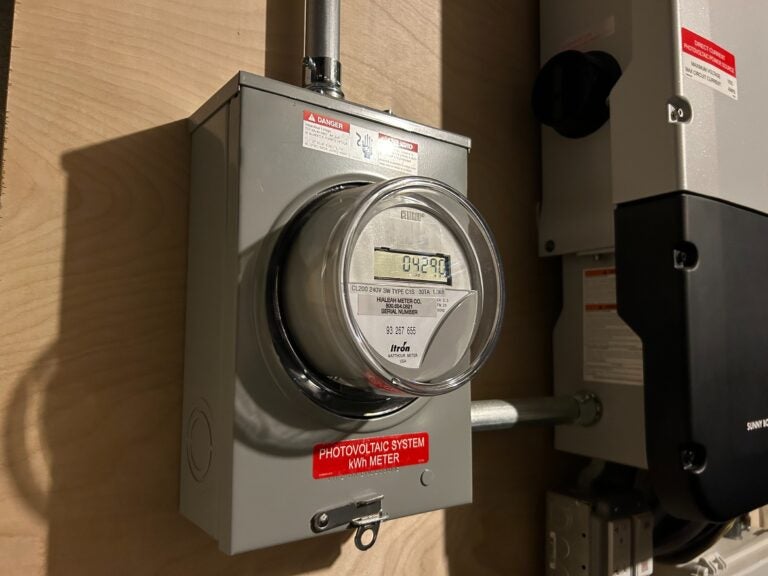
A meter shows energy produced by a photovoltaic system on the roof of a home in West Philadelphia. (Sophia Schmidt/WHYY)
This story is part of the WHYY News Climate Desk, bringing you news and solutions for our changing region.
From the Poconos to the Jersey Shore to the mouth of the Delaware Bay, what do you want to know about climate change? What would you like us to cover? Get in touch.
One in four low-income households in Philadelphia spends 16% of its income on energy bills, according to an analysis from the nonprofit American Council for an Energy-Efficient Economy.
It’s an energy burden that experts consider severe.
“Households that are experiencing high or severe energy burdens [may] make really difficult decisions around needs that they might need to go without in order to pay their energy bills,” said Roxana Ayala, a senior research analyst at the American Council for an Energy-Efficient Economy and lead author of the analysis.
The analysis, which used data from the Census Bureau’s 2021 American Housing Survey, revealed a slight decrease in the portion of household income that Philly families spend on energy compared to a prior analysis of 2017 data — but showed energy costs for low-income Philadelphians remain high.
It also found that Black, Hispanic and low-income households continue to spend a more significant portion of their income on energy than households overall.
In Philly in 2021, the median energy burden, or percent of household income spent on energy costs, was 3.6% for Black households and 4.1% for Hispanic households. The median energy burden for all Philly households was 2.7%.
Low-income homeowners in Philly had the highest median energy burdens, spending 10.5% of their income on energy bills, compared to 7.8% for low-income renters.
Researchers consider energy burdens above 6% to be “high” and above 10% to be “severe.”
Ayala said unequal energy burdens are a result of persistent disinvestment in communities, poorly insulated homes and inefficient appliances. ACEEE also points to neighborhood segregation and discriminatory lending practices limiting access to efficient and healthy housing for BIPOC communities.
“For example, low-income households frequently have less access to capital to really make these home improvements or upgrades to make their homes more efficient,” Ayala said. “When you continue to have an inefficient home or inefficient appliances, it continues to lead to more energy use, which would lead to higher costs.”
High energy bills can leave families facing utility shutoffs or making hard decisions about which expenses to pay.
A survey of residents in low-income neighborhoods in Philly by the faith-based nonprofit Esperanza and Community Legal Services last year found many people limit their use of air conditioning to avoid high bills.
“Having to make these decisions can really have an impact on safety for individuals in these households,” Ayala said.
The city of Philadelphia released a plan in July to alleviate high energy burdens for working-class Philadelphians. Its recommendations include piloting a “cool roof” program, exploring a heat pump bulk purchasing and installation program and scaling up weatherization programs.
The 2022 Inflation Reduction Act includes incentives for home energy efficiency measures that could help lower household energy costs, such as insulation, new windows and doors, and electric heat pumps. Taxpayers in Pennsylvania, New Jersey and Delaware claimed close to $500 million in tax credits for clean energy and energy-efficient home improvements last year, but higher-income households disproportionately benefitted nationally.

Subscribe to PlanPhilly
WHYY is your source for fact-based, in-depth journalism and information. As a nonprofit organization, we rely on financial support from readers like you. Please give today.




